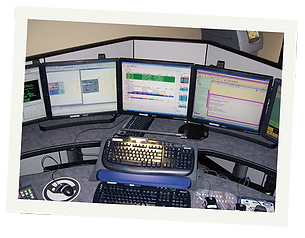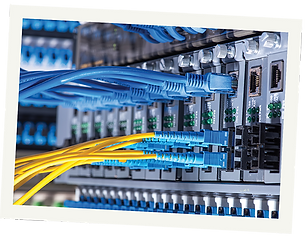



1937, 1957
In 1937 Great Britain introduced the first emergency 3 digit number system: 9-9-9. The United States began the process of creating a single emergency number in 1957, when the National Associate of Fire Chiefs requested a unified system. Ten years later Lyndon Johnson’s Commission on Law Enforcement and Administration of Justice furthered this recommendation with support from various government agencies and officials.

1988
In 1988 Allen County Commissioners signed a resolution bringing 9-1-1 to Allen County.

1968
On January 12th, 1968, AT&T (in cooperation with the FCC) announced the selection of 9-1-1 as a universal emergency number. Today, approximately 90% of the population is covered by the 9-1-1 emergency system, and 9-1-1 is promoted in TV, film, radio, and print media. 9-1-1 is universally acknowledged as the number for emergencies.
50 Years Later!!
Wireless Phase I service provides the location of the cellular tower that was utilized to complete the 9-1-1 call. Enhanced 9-1-1 Phase I service was the first step in providing better emergency response service to wireless 9-1-1 callers. When a wireless 9-1-1 call comes into the 9-1-1 Communications Center, the call-taker's computer screen will show the wireless phone's 10-digit call-back number if one has been assigned to the calling handset.
2001
2010
With Phase II service, the location information that is provided to the 9-1-1 Communications Center is the approximate X, Y (longitude, latitude) location of the handset making the call. This location information is typically more accurate than the Phase I location information (cell site/sector). As with Phase I, Phase II service allows call takers to receive both the caller's wireless phone number and their location information.
Public safety answering points across the country have been upgrading to a digital, Internet Protocol (IP)-based 911 system, commonly referred to as Next Generation 911 (NG911). The success and reliability of 911 has been greatly improved with the implementation of NG911, as it enhances emergency number services to create a faster, more resilient system that allows voice, photos, videos and text messages to flow seamlessly from the public to the 911 network. NG911 also improves PSAP ability to help manage call overload, natural disasters, and transferring of 911 calls and proper jurisdictional responses based on location tracking.
Emergency Services IP Network (ESInet) ESInets use broadband, packet switched technology capable of carrying voice plus large amounts of varying types of data using Internet Protocols and standards. ESInets are engineered, managed networks, and are intended to be multi‐purpose, supporting extended Public Safety communications services in addition to 9‐1‐1. NG9‐1‐1 assumes that ESInets are hierarchical, or a `network of networks’ in a tiered design approach to support local, regional, state and national emergency management authorities.





